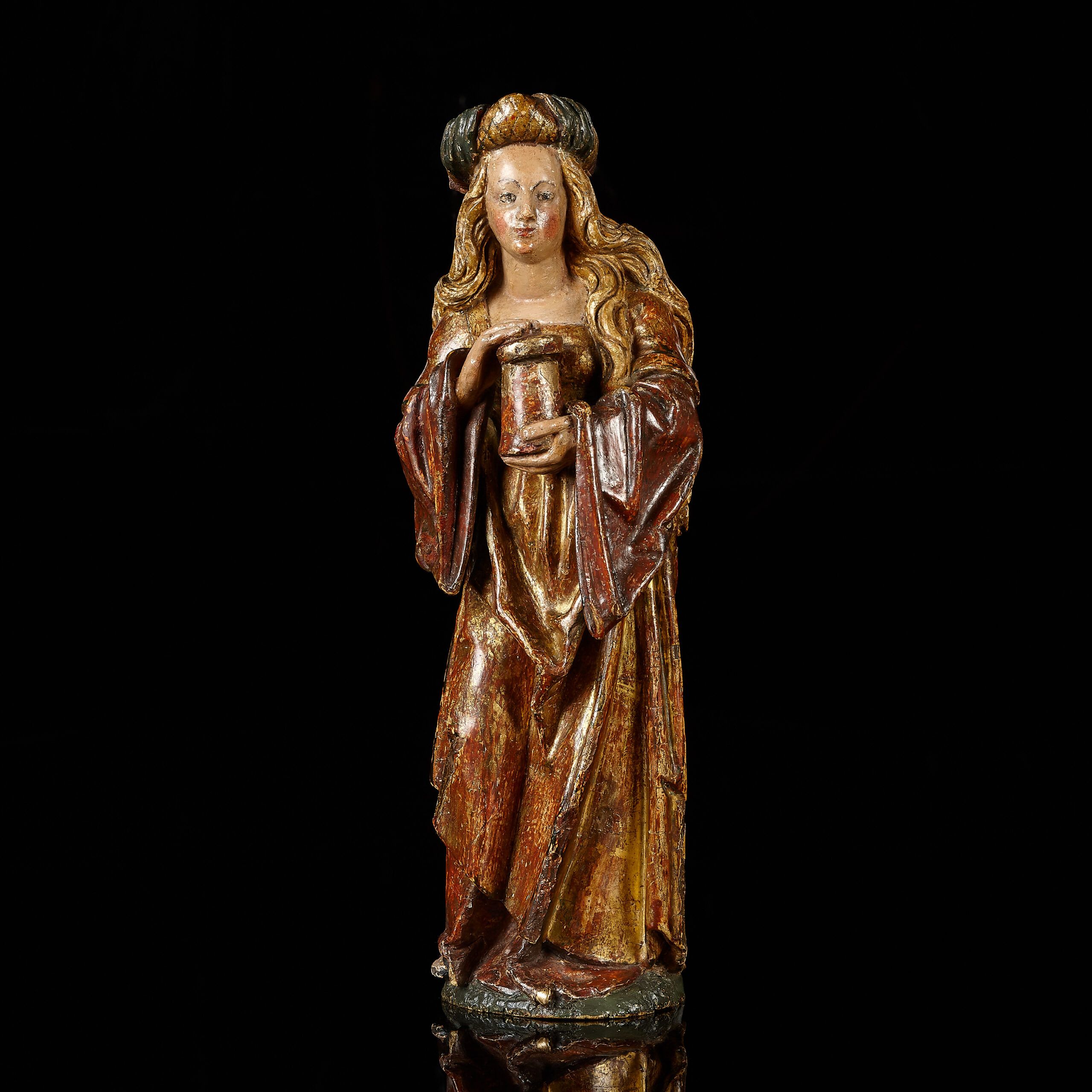South Tyrol
Late Gothic | First quarter of the 16th Century | Ca. 1500/10
Lime-wood | Carved in full-round | With original polychrome and gilding
H. 34 cm.
PROVENANCE
Private collection | Oud-Turnhout | Belgium
REFERENCE LITERATURE
Müller, T. (1976). Gotische Skulptur in Tirol. Bozen, nr. 142
Böhmer, S. (1993). Von der Erde zum Himmel. Heiligendarstellungen des Spätmittelalters. Aachen, nr. 10, pp. 38-39
Schwartz, M. H. ed. (2008). European Sculpture from the Abbott Guggenheim Collection. New York, nr. 106, p. 194
CATALOGUE NOTE
Mary Magdalene is depicted as young and beautiful woman wearing affluent robes, whose long blond hair flows loosely over her shoulders and along her back. In her hands she holds the alabastron, a perfume bottle containing ointment, which is her most frequent iconographic attribute. The rich attire refers to her past as an adulteress or even a harlot. Her loose hanging long hair is not only associated with her promiscuous passed, but also with a scene from her life in which she washes Jesus’ feet and dries them with her long hair as an act of repent.
Stylistically this elegant statuette relates to the carvings by the Austrian sculptor Hans Klocker (active before 1477 – after 1500) and his workshop. Klocker was the most distinguished sculptor in the generation after Michael Pacher and seems to have been active at the court of the bishop of Brixen (now Bressanone, Italy) in South Tyrol from around 1477 and onwards. Klocker directed a large workshop which produced elaborate altarpieces for major churches. His distinctive and influential style of carving included figures clad in drapery with sharp, angular folds and long diagonal swathes. The heavy robe of the saint as featured in the present statuette, rendered in broken folds is characteristic of the late work by Klocker and his workshop. For example compare the figures on the Marienaltar in the Franziskanekirche in Bozen, one of his last commissions finished ca. 1500. Notable too is a Saint Hieronymus sculpture, ca. 1490 and placed in the circle of Hans Klocker, kept in the collection of the Suermondt-Ludwig-Museum in Aachen (inv. nr. SK 0040, illustrated in Böhmer, 1993, nr. 1o), A number of smaller works by his workshop have been identified, including a fine pair of figures of the Virgin and Saint Joseph in the Kunshsthistorisches Museum (Mittelalterlicher Österreichischer Kunst) in Vienna (illustrated in Müller, 1976, nr. 142) and a figure of Saint Leonard dated 1495/1510 kept in the Minneapolis Institute of Arts (inv. nr. 62.23). As such, the present statuette can be situated in South Tyrol, possibly in the Brixen regio, and dated to the first quarter of the 16th century.

